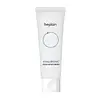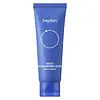What's inside
What's inside
 Key Ingredients
Key Ingredients

 Benefits
Benefits

 Concerns
Concerns

No concerns
 Ingredients Side-by-side
Ingredients Side-by-side

Water
Skin ConditioningGlycerin
HumectantMethyl Trimethicone
Skin ConditioningMethylpropanediol
SolventPanthenol
Skin Conditioning1,2-Hexanediol
Skin ConditioningAmmonium Acryloyldimethyltaurate/Vp Copolymer
Raffinose
Skin ConditioningBetaine
HumectantSodium Hyaluronate
HumectantHydrolyzed Hyaluronic Acid
HumectantAllantoin
Skin ConditioningMadecassoside
AntioxidantBeta-Glucan
Skin ConditioningEthylhexylglycerin
Skin ConditioningEthylcellulose
Butylene Glycol Cocoate
EmulsifyingCetearyl Olivate
Sorbitan Olivate
EmulsifyingIsostearyl Alcohol
EmollientPolyquaternium-51
Skin ConditioningWater, Glycerin, Methyl Trimethicone, Methylpropanediol, Panthenol, 1,2-Hexanediol, Ammonium Acryloyldimethyltaurate/Vp Copolymer, Raffinose, Betaine, Sodium Hyaluronate, Hydrolyzed Hyaluronic Acid, Allantoin, Madecassoside, Beta-Glucan, Ethylhexylglycerin, Ethylcellulose, Butylene Glycol Cocoate, Cetearyl Olivate, Sorbitan Olivate, Isostearyl Alcohol, Polyquaternium-51
Water
Skin ConditioningGlycerin
HumectantPropanediol
SolventHydrogenated Poly(C6-14 Olefin)
Emollient1,2-Hexanediol
Skin ConditioningCaprylic/Capric Triglyceride
MaskingCetyl Ethylhexanoate
EmollientPolyglycerin-3
HumectantOctyldodecanol
EmollientCetearyl Olivate
Squalane
EmollientAmmonium Acryloyldimethyltaurate/Vp Copolymer
Sorbitan Olivate
EmulsifyingCarbomer
Emulsion StabilisingButylene Glycol
HumectantTremella Fuciformis Polysaccharide
Emulsion StabilisingTromethamine
BufferingPanthenol
Skin ConditioningEthylhexylglycerin
Skin ConditioningAllantoin
Skin ConditioningSaccharide Hydrolysate
HumectantGardenia Florida Fruit Extract
Skin ConditioningXanthan Gum
EmulsifyingDipotassium Glycyrrhizate
HumectantAdenosine
Skin ConditioningSodium Hyaluronate
HumectantCoptis Japonica Extract
AntimicrobialXylitylglucoside
HumectantIndigofera Tinctoria Extract
MaskingAnhydroxylitol
HumectantAgave Tequilana Leaf Extract
AstringentMoringa Oleifera Seed Oil
EmollientXylitol
HumectantHemerocallis Fulva Flower Extract
Skin ConditioningCeramide NP
Skin ConditioningGlucose
HumectantMyosotis Sylvatica Flower/Leaf/Stem Extract
Skin ConditioningPhytosphingosine
Skin ConditioningHydrogenated Lecithin
EmulsifyingBeta-Glucan
Skin ConditioningHyaluronic Acid
HumectantWater, Glycerin, Propanediol, Hydrogenated Poly(C6-14 Olefin), 1,2-Hexanediol, Caprylic/Capric Triglyceride, Cetyl Ethylhexanoate, Polyglycerin-3, Octyldodecanol, Cetearyl Olivate, Squalane, Ammonium Acryloyldimethyltaurate/Vp Copolymer, Sorbitan Olivate, Carbomer, Butylene Glycol, Tremella Fuciformis Polysaccharide, Tromethamine, Panthenol, Ethylhexylglycerin, Allantoin, Saccharide Hydrolysate, Gardenia Florida Fruit Extract, Xanthan Gum, Dipotassium Glycyrrhizate, Adenosine, Sodium Hyaluronate, Coptis Japonica Extract, Xylitylglucoside, Indigofera Tinctoria Extract, Anhydroxylitol, Agave Tequilana Leaf Extract, Moringa Oleifera Seed Oil, Xylitol, Hemerocallis Fulva Flower Extract, Ceramide NP, Glucose, Myosotis Sylvatica Flower/Leaf/Stem Extract, Phytosphingosine, Hydrogenated Lecithin, Beta-Glucan, Hyaluronic Acid
 Reviews
Reviews

Ingredients Explained
These ingredients are found in both products.
Ingredients higher up in an ingredient list are typically present in a larger amount.
1,2-Hexanediol is a synthetic liquid and another multi-functional powerhouse.
It is a:
- Humectant, drawing moisture into the skin
- Emollient, helping to soften skin
- Solvent, dispersing and stabilizing formulas
- Preservative booster, enhancing the antimicrobial activity of other preservatives
Allantoin is a soothing ingredient known for its protective and moisturizingg properties. Because of this, it is often added to products with strong active ingredients.
Studies show higher concentrations of this ingredient can promote wound healing.
Though it can be derived from the comfrey plant, allantoin is produced synthetically for cosmetic products to ensure purity.
Learn more about AllantoinAmmonium Acryloyldimethyltaurate/Vp Copolymer (let's call it AAVC for short) is a synthetically created polymer. It's used as a film-forming agent and used to thicken the consistency of products.
AAVC is able to increase the consistency and viscosity of products due to its large molecule size. It also prevents ingredients from separating.
Beta-Glucan is a polysaccharide. It can be derived from the cell walls of seaweed, oats, yeast, and fungi. It hydrates the skin and helps boost your skin's natural barrier.
As an antioxidant, beta-glucan helps fight free-radicals. Free-radicals are molecules that may damage your skin cells, such as pollution.
Studies show this ingredient may be an effective wrinkle reducer as it can deeply penetrate into skin. It has also been show to help with wound healing.
Learn more about Beta-GlucanCetearyl Olivate is an emulsifier and texture enhancer. It is derived from the fatty acids of olive oil and Cetearyl alcohol, and is biodegradable.
As an emulsifier, it is used to prevent oils and waters from separating. It can also
Manufacturers use the name Olivem 1000. This ingredient has been found to preserve the natural microbiome of skin. Having a healthy microbiome helps keep our skin healthy and protects against harmful bacteria. This ingredient is grouped with Sorbitan Olivate under the name Olivem 1000.
Learn more about Cetearyl OlivateEthylhexylglycerin (we can't pronounce this either) is commonly used as a preservative and skin softener. It is derived from glyceryl.
You might see Ethylhexylglycerin often paired with other preservatives such as phenoxyethanol. Ethylhexylglycerin has been found to increase the effectiveness of these other preservatives.
Glycerin is already naturally found in your skin. It helps moisturize and protect your skin.
A study from 2016 found glycerin to be more effective as a humectant than AHAs and hyaluronic acid.
As a humectant, it helps the skin stay hydrated by pulling moisture to your skin. The low molecular weight of glycerin allows it to pull moisture into the deeper layers of your skin.
Hydrated skin improves your skin barrier; Your skin barrier helps protect against irritants and bacteria.
Glycerin has also been found to have antimicrobial and antiviral properties. Due to these properties, glycerin is often used in wound and burn treatments.
In cosmetics, glycerin is usually derived from plants such as soybean or palm. However, it can also be sourced from animals, such as tallow or animal fat.
This ingredient is organic, colorless, odorless, and non-toxic.
Glycerin is the name for this ingredient in American English. British English uses Glycerol/Glycerine.
Learn more about GlycerinPanthenol is a common ingredient that helps hydrate and soothe the skin. It is found naturally in our skin and hair.
There are two forms of panthenol: D and L.
D-panthenol is also known as dexpanthenol. Most cosmetics use dexpanthenol or a mixture of D and L-panthenol.
Panthenol is famous due to its ability to go deeper into the skin's layers. Using this ingredient has numerous pros (and no cons):
Like hyaluronic acid, panthenol is a humectant. Humectants are able to bind and hold large amounts of water to keep skin hydrated.
This ingredient works well for wound healing. It works by increasing tissue in the wound and helps close open wounds.
Once oxidized, panthenol converts to pantothenic acid. Panthothenic acid is found in all living cells.
This ingredient is also referred to as pro-vitamin B5.
Learn more about PanthenolSodium Hyaluronate is hyaluronic acid's salt form. It is commonly derived from the sodium salt of hyaluronic acid.
Like hyaluronic acid, it is great at holding water and acts as a humectant. This makes it a great skin hydrating ingredient.
Sodium Hyaluronate is naturally occurring in our bodies and is mostly found in eye fluid and joints.
These are some other common types of Hyaluronic Acid:
Learn more about Sodium HyaluronateSorbitan Olivate is created from the fatty acids in olive oil and sorbitol.
This ingredient is an oil in water emulsifier. It helps stabilize a product by preventing oils and waters from separating. Sorbitan Olivate also helps hydrate the skin.
Manufacturers sell sorbitan olivate under the name OliveM 1000. OliveM 1000 a multifunctional ingredient. It is self-emulsifying. According to a manufacturer, OliveM 1000 does not disrupt natural skin biome.
Due to its olive oil base, this ingredient may not be fungal-acne safe.
Learn more about Sorbitan OlivateWater. It's the most common cosmetic ingredient of all. You'll usually see it at the top of ingredient lists, meaning that it makes up the largest part of the product.
So why is it so popular? Water most often acts as a solvent - this means that it helps dissolve other ingredients into the formulation.
You'll also recognize water as that liquid we all need to stay alive. If you see this, drink a glass of water. Stay hydrated!
Learn more about Water